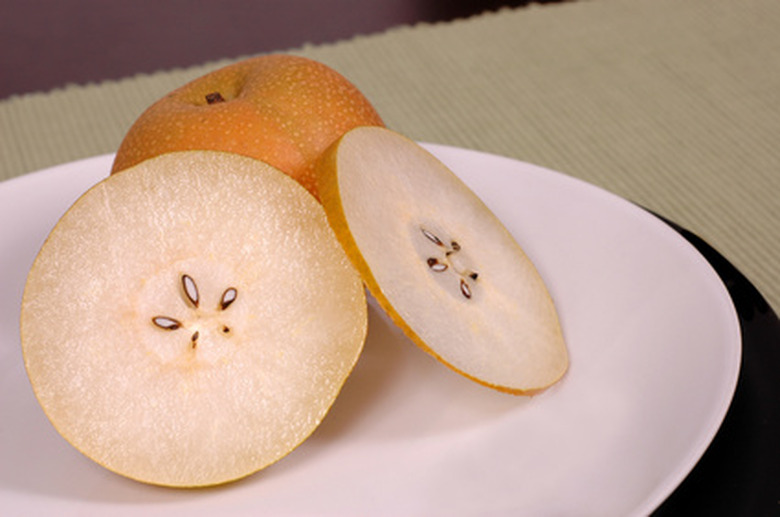How To Tell When An Asian Pear Is Ripe?
There is one major difference between all Asian pear varieties and European pear varieties: how they ripen. European pears must be picked and sent to market while they are not yet ripe. Leaving them on a counter at room temperature allows them to ripen, much like bananas or apples. Asian pears, however, must be fully ripe before they are picked. They will not ripen any further once they have been removed from the tree. Discerning whether or not they are ripe is therefore key.
Step 1
Smell the pear. Sniff all over to detect whether it smells strongly of pear.
- There is one major difference between all Asian pear varieties and European pear varieties: how they ripen.
- Leaving them on a counter at room temperature allows them to ripen, much like bananas or apples.
Step 2
Touch the pear all over. Rub it gently but do not squeeze; ripe Asian pears will be firm, similar to unripe European pears.
Step 3
Look for insect damage. Ensure that anything you are smelling is not coming from harm wrought by unwanted Asian pear pests.
Step 4
Take a bite. Flavor should be strong and slightly sweet; flesh should be firm and juicy if the pear is ripe.
Tip
Asian pears, like most fruits, emit a stronger smell the closer they are to being ripe. If you have never smelled an Asian pear before, be aware that they smell somewhat similar to European pears, but sweeter and somewhat more floral. If the Asian pear you are touching feels soft, it is overripe and will no longer be good to eat. Ripe Asian pears can be stored at room temperature from anywhere between two weeks and six months, depending on the variety. Korean shingo pears, which can rival a grapefruit in size, are some of the Asian pears that last the longest.
Warning
Beware of internal browning. Debate still rages worldwide over what causes it. However, there is no debate over the symptoms. Asian pears that are victims of internal browning will look wonderful on the outside, but will have mushy, gummy brown flesh on the inside. Asian pear flesh is usually firm and white, possibly with a slight tinge of yellow. If affected pears are coming from your own Asian pear tree, check others to see if they have been affected, too. It is uncertain whether this problem is caused by disease, fungus or insects. Your other Asian pears may be fine. Do not pick Asian pears before they are ripe. They will not continue to ripen any further once picked and will be tasteless and hard.
